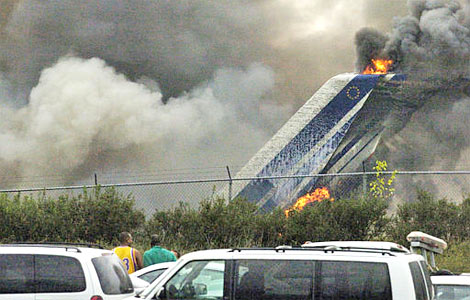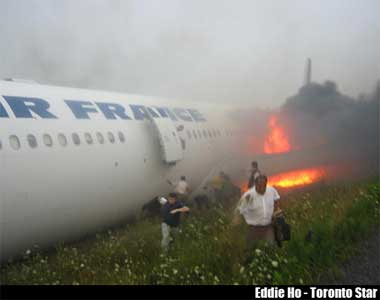On Sunday the Seattle Times revealed how in 2005 Boeing received some very bad news about the dangers of a plastic 787 in what would be a ‘survivable’ crash landing in a metal alloy jet like its 777.
However, as the author Dominic Gates reported, Boeing also dealt with the problem by specially designing under cabin floor crumple load stanchions that would dissipate the potentially lethal G forces generated in a stiff composite structure smacking the ground in a way that rendered them as non-lethal as they would have been in a less rigid metallic airliner.
The devil in the story may be found however in a disagreement between Boeing and the FAA on one hand, and some of those also interviewed by Gates.


One of them, composite materials engineer and consultant, Derek Yates, has even prepared two papers on the fire, smoke and toxicity or FST vulnerability of high composite airliners, notably the 787 Dreamliner and the Airbus A350.
They are available as downloads linked to the Seattle Times story.
Yates argues that the FAA should not certify the 787 until an FST test is done on a ruptured, compromised and opened carbon fibre reinforced plastic Dreamliner passenger barrel in a fuel fed fire, indicative of the conditions in which people have survived metal alloy airliner crashes.
He claims that the Boeing test for FST, which found the structure of the Dreamliner met and exceeded the fire resistant performance of alloy structures, is irrelevant because it was on a closed rather than broken structure.
Yates has reviewed 111 lower speed survivable crashes in airliners all of which involved the breaking open of sections of the fuselage by the forces of impact including sliding along the ground or striking buildings, vehicles or machinery, such as the Singapore Airlines 747 that gutted itself on construction equipment on a rushed take off at Taipei in 2001 when the crew failed to notice they had turned onto the wrong runway.
His concern is that the toxicity of burning plastics, in particular the epoxy resins used to glue laminates of carbon fibre together, will enter broken composite cabins and seriously affect survivors before they can escape from the jet.
Yates cites the crash of a composite constructed B-2 bomber at Guam in January 2008 which gave off clouds of fumes that affected communities living downwind from the accident and a report by the US Naval Health Research Center Department which found that advanced composite materials ‘pose a lethal public toxicity hazard.’
He says that only by studying the results of such a burning and broken fuselage test can the true safety performance of a 787 in a lower speed crash like those involving over 100 airliners or freighters be measured, and any necessary changes made.
Boeing is resisting the notion, as it ‘works with’ the FAA to achieve certification of the Dreamliner.
At this point it is worth considering the implications of the criticisms of Yates and others have put on the public record about the 787 design and certification process. If their concerns are correct the Dreamliner will indeed have passed a multitude of very tough tests, but not even had the chance to pass or fail a ‘real world’ test that would assess its suitability in circumstances like those found in 111 crashes in which some or all of those on board were able to escape with their lives.







Crikey is committed to hosting lively discussions. Help us keep the conversation useful, interesting and welcoming. We aim to publish comments quickly in the interest of promoting robust conversation, but we’re a small team and we deploy filters to protect against legal risk. Occasionally your comment may be held up while we review, but we’re working as fast as we can to keep the conversation rolling.
The Crikey comment section is members-only content. Please subscribe to leave a comment.
The Crikey comment section is members-only content. Please login to leave a comment.